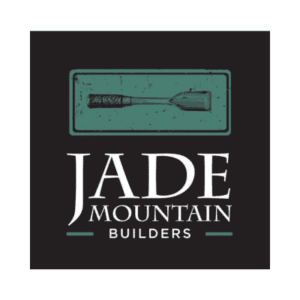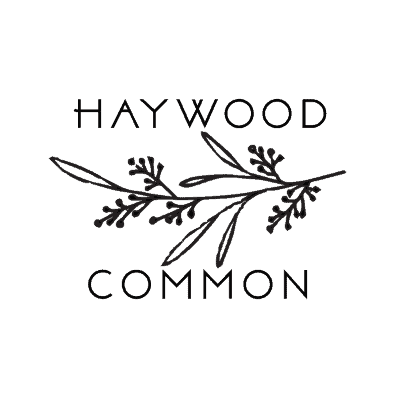
Kaleidoscope – April 2016
Kaleidoscope, April 2016
The Maypole gets wrapped on Monday at the annual Rainbow May Day Celebration – a quintessential Rainbow event. Fairies, elves, ancient dances, strawberries and cream – anyone who can slip away for the morning from 10:30 to about 11:30 will be filled with the delights of spring and the gift of life. You are all invited!
The LONG Summary of the March 22 Community Circle
The last Kaleidoscope I published was right before the March Community Circle, which was about “Cracking the Nut.” How can we keep tuition affordable, while increasing teacher salaries and improving equity? We started the meeting with an overview of how the budget is developed each year at Rainbow, stressing that since 80% of our expenses are staff salaries and expenses, any raises in staff pay directly increases tuition. We noted that our overall financial standing is very solid as a non-profit organization.
There seemed to be general agreement that the need to pay our teachers at least equal to district public school teachers is paramount, and whether the money for that comes from fees or increased tuition, people are behind that effort in spirit. In fact, people have made the point that paying our teachers fairly is an equity issue.
However, there was also concern that increasing tuition would create a hardship on many current families who might not be able to stay through years of tuition increases, and as one parent expressed at the meeting, they don’t want Rainbow to become a culture of the elite, where only those of the highest income brackets attend. As I put it in one of the slides in my presentation, we want a culture of community, not a culture of commodity – the latter being more like a business, and the former a culture where a community of people are working together to create a successful nonprofit organization and to provide the healthiest and most loving atmosphere possible for our children. If tuition increases too much, would that increase the risk of a more transactional/commodity-based community developing?
How much would tuition increase annually in order to meet the current goal to raise teacher salaries to the level of district teachers within four years, along with other strategic plan goals, such as increasing diversity?
Approximately 7% a year, for four years. To provide some context, the national average for private school annual increase is 5.4%. For the 2016-17 school year, Rainbow tuitions are increasing 6.8% on average.
To simply maintain regular staff raises, we need to increase tuition about 4%/year. The extra 3% increase amounts to about $360 per family/per year on average, or about $30/month.
The most confusing aspect of the meeting was having teacher pay linked with increasing equity and diversity.
The primary reason for this linkage is that if teacher salaries increase dramatically, the higher cost of attending will make RCS even less equitable, further exasperating its inaccessibility to those of lower and moderate incomes.
What is the connection between equity and diversity?
Equity is not the same as equality. Equality means that everyone is treated exactly the same. Equity means that those who have fewer advantages are given a chance to have some of the same opportunities as those with more advantages. In a society where people are born into very inequitable situations, we all struggle with the issue of inequity: It’s inherent in our society, but an organization that believes in mitigating societal issues rather than exasperating them, would logically try to make its own culture as equitable as possible. In a private school, financial aid is an example of a tool that promotes equity. Those who can’t afford to pay 100% of tuition receive a discount. Roughly 25% of our school population already receives a tuition discount, including staff children.
What do we mean by diversity?
Diversity comes in many forms, including religious, ethnic, racial, socio-economic, and gender identification, to name a few. We think/hope Rainbow is a fairly open and safe environment for most forms of diversity. However, racial diversity is severely lacking, and socio-economic diversity could be improved.
Why do we want diversity?
At the community circle, I presented a list of six primary reasons – too much to delve into within this newsletter. One reason is that we are a holistic school with a mission to develop leaders who will build a more compassionate world. We teach primarily using experiential learning, which means kids learn through experience. While we can cognitively teach students to be open, accepting, and empathetic of people of all types of races, incomes, etc, if they are not experiencing that diversity, it is very hard to embody that acceptance.
Is there a connection between racial diversity and socio-economic diversity?
In Asheville, yes. While the rest of the country is becoming more racially diverse, Asheville has one of the most severe gentrification circumstances in the country, making it whiter with each passing day. It’s been especially devastating for the African-American population. A mere few years ago, black people made up approximately 18% of our population. That number has sunk to as low as 8% by recent estimates. Of the black people who remain here, 59% are below the poverty line, and about 50% live in housing projects — some of the worst statistics for black people in the country. This is one of the reasons Asheville is extremely segregated along racial and income lines. There are very few middle class or wealthy African Americans in Asheville. Therefore, to build a more racially diverse population at Rainbow, statistically, we would have to offer affirmative action/financial aid funds, meaning increasing our socio-economic diversity as well. However, please don’t assume that all students of color at Rainbow are on financial aid, as that is not the case!
Isn’t there more to building a diverse school community than offering financial aid?
There sure is, which is one reason why we have a Director of Equity, why faculty have been focused on training around equity and racial understanding, and why we are auditing our classrooms and curriculum with an eye to equitability. Campus needs to feel like a safe, comfortable, and open atmosphere for all races. That includes having enough diversity that people don’t feel they are token members of a particular race.
Should our strategy be to increase teacher salaries first, and then focus on diversity?
I have had several people ask this, and it’s a fair question. Of course income is important to our teachers, but so is equity. These are people who got into teaching to change the world! That is why they are such great, passionate teachers. The staff doesn’t see this as an either/or situation. We aren’t going to EITHER raise teacher salaries OR improve equity; we need to do both. As one teacher put it, “I only want to work at a school that holds equity as a number one value.” Teachers know that to properly serve your child, they need to be a part of a community that walks the talk of one of our core pillars, as stated in our method: “We model within our community the kind of world in which we aspire to live.” Our teachers believe that all children should have access to an education like we have here. While we are practical about not being able to accept anyone and everyone on a sliding fee scale, we believe we can do better than we are now.
The good news is that all of the above is possible as long was we proceed at a modest pace.
Some of the revenue-gaining methods presented and discussed at the community circle to both increase teacher salaries and improve equity were:
-Increase the annual campaign
-Implement an extra fee that is on a sliding fee scale.
-Increase revenues outside the parent body by opening the Rainbow Institute to bring in large outside grants and also revenues for services. (To be continued…more on this in the next Kaleidoscope.)
We may do a combination of all of the above in order to mitigate tuition increases. Be assured that we will take this one step at a time. Our board and administration do an excellent job of managing our finances, and we will not take on any extra expenses without having the revenue in place. The plan that is adopted, with include a year-by-year analysis and opportunity to adapt.
As I said above, I have had many people approach me to say how important it is to them to pay our fabulous teachers fairly, and they were very willing to pay more tuition in support of that effort. That’s awesome! The teachers feel so supported! That spirit is what makes our community special. We also hope to find solutions to keep those families who can’t afford higher tuition here.
New ideas
Some good new ideas came out of the circle. My personal favorite was the idea to give parents the opportunity to make a donation any/every month along with their TADS payment. This would probably greatly increase the amount of funds donated each year. Margaret is trying to figure out if this is possible through the TADS platform.
Another idea that an expert in sustainable systems later gave to the board, is to calculate the value of attending school at Rainbow Community School, and work backwards from that. Of course, the value is much higher than the tuition that is actually being charged. New families coming in may choose to pay the full value, and current families could choose to continue at the current tuition trajectory.
OTHER NEWS
News of planning a high school
Yes, it is in our strategic plan to examine the feasibility of opening a high school within 7 to 10 years, but many of you have been very excited to learn that we were applying to the national XQ competition for the chance to win 10 million dollars for the purpose of starting a high school. I am honored to announce that our high school design is one of 347 that made it into the semi-finals out of the original 1200 teams. While we need to be realistic about our chances of being one of the five teams who wins $10,000,000; the competition has forced us get our high school concept on paper, which will be a huge advantage in the future, when/if the opportunity to open a high school presents itself. Some of you have asked if we do win the XQ competition, how long before the high school would open. XQ has not defined their preferred timeline, but it is rumored to be about three to five years.
How about those Lectica Scores? Hopefully, you got to read the exciting announcement about Rainbow scoring higher than any other school in the nation. Here is a link to the letter.








